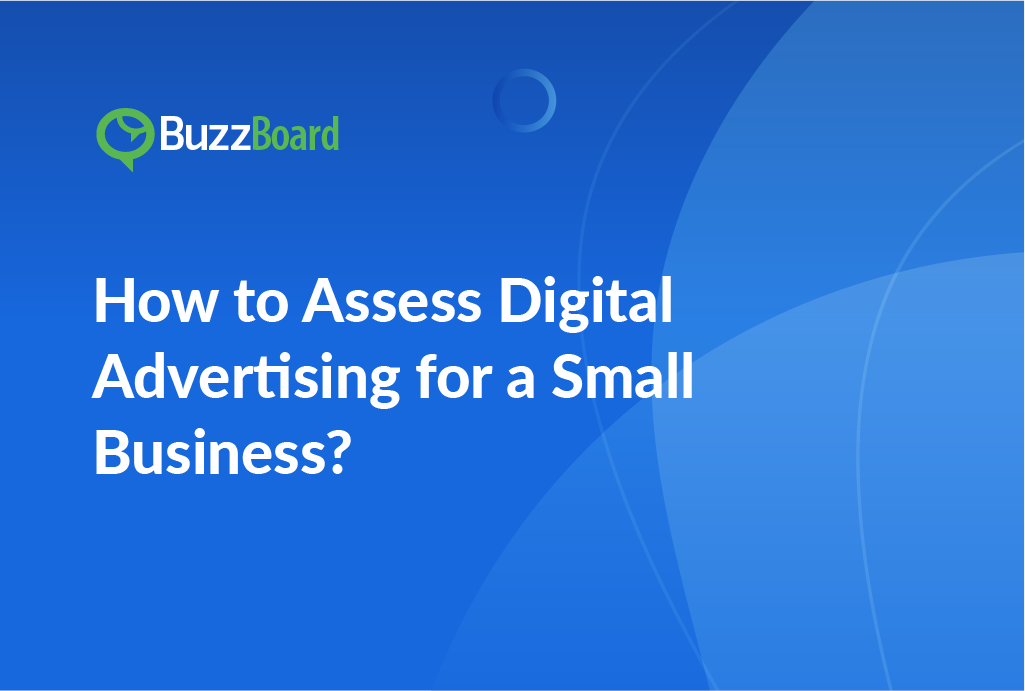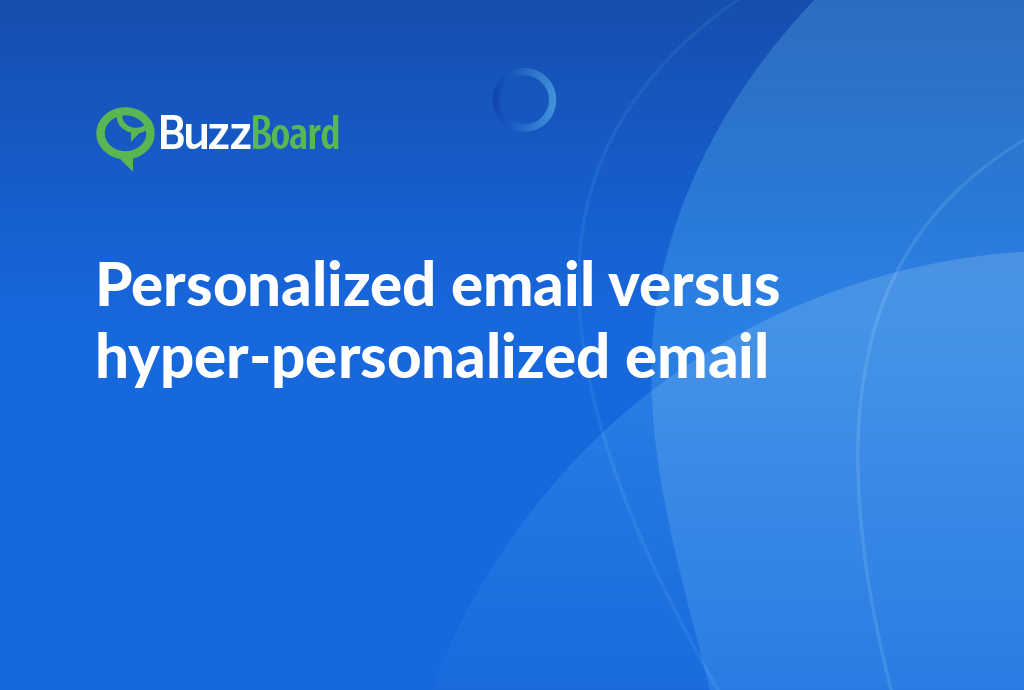How to Assess Digital Advertising for a Small Business: A Step-by-Step Guide
Assessing the effectiveness of digital advertising for a small business can be a daunting task. However, by following a structured approach, you can identify areas for improvement and optimize your campaigns for better ROI. Here’s a step-by-step guide to help you assess your digital advertising efforts:
- Set clear goals: Define your target audience, desired outcomes, and key performance indicators (KPIs) to measure success.
- Track website analytics: Monitor website traffic, conversion rates, and bounce rates to understand user behavior.
- Analyze ad performance: Review ad metrics such as click-through rates, cost per click, and conversion rates to identify top-performing ads.
- Assess ad targeting: Evaluate your targeting strategies, including demographics, interests, and behaviors, to ensure you’re reaching your target audience.
- Audit ad spend: Review your ad spend to identify areas where you can optimize budgets and improve ROI.
- Conduct competitor research: Analyze your competitors’ digital advertising strategies to identify gaps and opportunities.
- Test and iterate: Continuously test new ad creative, targeting strategies, and bidding tactics to optimize your campaigns.
By following these steps, you can gain a deeper understanding of your digital advertising performance and make data-driven decisions to improve your campaigns and drive more conversions for your small business.
Introduction
As a digital agency salesperson catering to small businesses, understanding key metrics like CTR, CPC, conversion rates, and ROAS is crucial to assess their digital advertising performance. These metrics help you evaluate campaign effectiveness, compare results to industry standards, and identify areas for improvement. By using data-driven insights, you can deliver results-oriented strategies that support their growth and set you apart from the competition.
To effectively use digital advertising for small businesses, it is crucial to understand their unique advertising goals and objectives. This includes identifying specific key performance indicators (KPIs) such as return on investment (ROI), local brand recognition, conversions, and other metrics that are critical to their business success. By understanding these goals, digital advertisers can craft personalized solutions that are tailored to meet the specific needs and objectives of each business.
In addition to understanding advertising goals, analyzing ad creative, placement, and audience targeting is also essential for optimizing campaigns. This involves evaluating the effectiveness of various ad formats, such as display ads, social media ads, and search engine ads, as well as the placement of ads on different websites, social media platforms, and search engines. It also involves identifying the most effective audience targeting strategies, such as demographics, interests, behaviors, and lookalike targeting, to ensure that ads are being seen by the right people at the right time.
Partnering with a digital agency can be a valuable resource for small businesses looking to leverage advanced tracking tools, calculate ROI accurately, and achieve campaign success. Digital agencies have access to a wide range of tools and technologies that can help small businesses track the performance of their ads, measure the effectiveness of their campaigns, and make data-driven decisions to optimize their advertising efforts.
Ongoing optimization is also essential for maximizing the power of digital advertising. This involves regularly testing and refining ad creative, placement, and targeting strategies to ensure that campaigns are performing at their best. It also involves staying up-to-date with the latest trends and best practices in digital advertising, as well as adapting to changes in the market and consumer behavior.
To achieve ongoing optimization, small businesses should encourage a culture of testing, learning, and adaptation within their organization. This involves setting clear goals and objectives for each campaign, tracking and measuring performance, and using data to inform decision-making. It also involves staying flexible and willing to pivot or adjust campaigns as needed to achieve the best possible results.
By understanding their unique advertising goals, analyzing ad creative, placement, and audience targeting, partnering with a digital agency, and encouraging ongoing optimization, small businesses can maximize the power of digital advertising and achieve their marketing goals.
Key Metrics for Assessing Small Business Digital Advertising Programs
Assessing digital advertising performance is crucial for all small businesses looking to optimize their marketing investments. Key metrics provide valuable insights into the effectiveness of strategies, informing future initiatives. As salespeople for digital agencies that cater to small and local businesses, understanding these metrics is vital to deliver beneficial insights to your clients.
Key performance metrics in digital advertising encompass click-through rates (CTR), cost per click (CPC), conversion rates, and return on advertising spend (ROAS). These metrics help monitor the effectiveness of your client’s advertising efforts across various digital platforms, evaluating them against industry standards and past performance.
For example, CTR measures how consistently people click on your client’s ads, assessing the ad’s relevance and audience interest. Conversely, CPC helps determine the cost of each click on particular platforms — a crucial factor for small businesses with limited budgets.
Moreover, conversion rates show the percentage of users who complete a desired action after viewing an ad, varying from making a purchase to subscribing to a newsletter. Lastly, ROAS is essential in calculating the efficiency of your client’s digital advertising expenditures.
These metrics allow you to deliver more efficient, results-oriented strategies for your clients, supporting their ongoing pursuit of growth in the digital sphere.
Remember, successful digital advertising isn’t just about promotion, but also about understanding how to gauge and enhance its performance for superior returns. By utilizing these metrics, you can offer other businesses a clear, data-driven approach to digital advertising, setting both them and you apart from the competition.
Understanding the Small Business’s Advertising Goals
Small businesses are increasingly relying on digital advertising to reach a broader customer base, enhance their visibility, and ultimately drive revenue growth. However, to effectively tailor a customized marketing strategy that meets their unique needs and vision, it is essential for digital agencies to comprehend the specific objectives and strategies of these small businesses.
The crux of digital advertising for small businesses lies in understanding their unique goals, which are often shaped by several key factors, including market reach, customer demographics, competition, and their mission and vision. Unlike multinational corporations, small businesses operate in a localized environment, with restricted budgets and often competing against more prominent adversaries. As a result, their digital advertising goals tend to focus on generating an immediate return on investment (ROI), creating local brand recognition, driving foot traffic, and achieving short-term sales conversions.
To achieve these goals, small businesses require digital advertising campaigns that deliver quick, tangible results from each advertising dollar invested. As professionals serving these small businesses, it is crucial to ensure the realization of these goals through strategic digital advertising campaigns that are tailored to their specific needs and objectives.
In today’s customer-centric era, authenticity and personal connections are highly valued. Therefore, digital advertising for small businesses should focus on creating narratives around the local community and real-life experiences. This approach should seamlessly integrate strategy and creativity, combining them in a way that yields immediate results while creating a lasting impact.
To help small businesses achieve their unique goals, digital agencies should provide them with effective, personalized solutions that cater to their specific needs and objectives. This may involve developing targeted social media campaigns, creating engaging content, and leveraging search engine optimization (SEO) techniques to improve online visibility.
By understanding the aims and strategies of small businesses in digital advertising, digital agencies can develop customized marketing strategies that align with their clients’ needs and vision. This, in turn, can help small businesses achieve their goals, drive revenue growth, and establish a strong online presence.
Understanding the aims and strategies of small businesses in digital advertising is vital for any digital agency looking to serve these clients effectively. By providing personalized solutions that cater to their unique needs and objectives, digital agencies can help small businesses achieve their goals, drive revenue growth, and establish a strong online presence.
Analyzing Ad Creative, Placement, and Audience Targeting
Optimizing digital advertising strategies is crucial for small businesses seeking to maximize their online presence and drive meaningful results. A comprehensive analysis of ad creative, placement, and audience targeting is essential for achieving this goal. By examining these three critical components, businesses can determine which messages resonate most with their target audience, ultimately driving conversions and revenue growth.
Ad creative is a vital aspect of digital advertising, encompassing the visual and copy elements that comprise an advertisement. Digital agencies often employ striking visuals, compelling calls to action, and persuasive copy to pique customer interest and capture attention. When evaluating ad creative, it’s essential to assess its appeal and relevance to the target audience, requiring an in-depth understanding of the audience’s needs, interests, and behaviors. This involves analyzing factors such as:
- Visual appeal: Does the ad feature high-quality images or videos that grab attention?
- Messaging: Is the copy clear, concise, and relevant to the target audience?
- Emotional connection: Does the ad evoke emotions, such as excitement, curiosity, or empathy?
- Call-to-action: Is the CTA clear, prominent, and actionable?
By evaluating these elements, businesses can determine whether their ad creative is effectively communicating their message and resonating with their target audience.
Ad placement is another critical component of digital advertising, involving the strategic decision of where and when to display digital ads. This could include:
- Website targeting: Displaying ads on specific websites or sections of websites that align with the target audience’s interests and behaviors.
- Geotargeting: Targeting ads to specific geographic locations, such as cities, states, or countries.
- Time-of-day targeting: Displaying ads during specific times of the day or week when the target audience is most active.
- Device targeting: Targeting ads to specific devices, such as desktops, laptops, tablets, or mobile phones.
The objective of ad placement is to connect with the target audience at a time and place they are most likely to engage with the ad, increasing the likelihood of conversions and revenue growth.
Audience targeting is the process of identifying the most fitting prospects for a business’s products or services. Digital agencies utilize audience data, such as demographics, behaviors, interests, and purchasing history, to create customized advertising messages that resonate with the target audience. This involves:
- Identifying key demographics: Age, gender, income level, and other demographic factors that define the target audience.
- Analyzing behaviors: Online behaviors, such as search queries, browsing history, and purchase history, that indicate interest in a product or service.
- Understanding interests: Identifying the topics, hobbies, and passions that align with the target audience’s interests and needs.
- Creating buyer personas: Developing detailed profiles of the target audience, including their goals, challenges, and motivations.
By combining these elements, businesses can create targeted advertising campaigns that speak directly to their target audience, increasing engagement, conversions, and revenue growth.
The efficacy of digital advertising hinges on careful analysis of ad creative, placement, and audience targeting. Small businesses can collaborate with expert digital agencies to optimize these elements and launch successful advertising campaigns. By doing so, they can:
- Increase brand awareness and reach a wider audience
- Drive conversions and revenue growth
- Improve return on investment (ROI) and reduce waste
- Enhance customer engagement and loyalty
- Gain a competitive edge in the market
Analyzing ad creative, placement, and audience targeting is a critical component of digital advertising for small businesses. By evaluating these elements and collaborating with expert digital agencies, businesses can optimize their advertising strategies, drive meaningful results, and achieve long-term success.
ROI Calculation for Small Business Digital Ads
In today’s competitive digital landscape, small businesses face significant challenges in standing out from the crowd. With limited budgets and intense competition, it’s crucial for these businesses to develop effective digital advertising strategies that drive results. However, to maximize the benefits of digital advertising, small businesses must accurately calculate their ROI, considering every dollar spent on digital agencies.
The ROI calculation process is straightforward, yet it requires careful attention to detail. To calculate the ROI of a digital advertising campaign, small businesses should subtract their digital advertising expenditure from the revenue generated. Then, they should divide the result by the digital advertising cost and multiply it by 100. The resulting figure represents the ROI of the digital advertising campaign as a percentage.
While this calculation may seem simple, it can become complicated when dealing with indirect revenue streams. For instance, revenue may come from customer loyalty, brand awareness, or repeat visits, which can be challenging to quantify. To overcome this hurdle, small businesses must establish a clear system to track these metrics. This can be achieved by using tools like Google Analytics or hiring a digital agency specializing in ROI calculations.
Digital agencies with expertise in ROI calculations can leverage advanced tracking tools and provide detailed performance metrics insights. These agencies can help small businesses identify areas of improvement, optimize their campaigns, and make data-driven decisions to maximize their ROI.
A robust digital advertising strategy based on accurate ROI calculation can help small businesses compete in the marketplace, ensuring that each marketing dollar is well spent. By understanding the ROI of their digital advertising efforts, small businesses can:
- Identify areas of improvement: By tracking the ROI of their digital advertising campaigns, small businesses can pinpoint which strategies are driving the most revenue and which ones need adjustment.
- Optimize campaigns: With accurate ROI data, small businesses can refine their campaigns to target the most effective channels, ad formats, and audiences.
- Make data-driven decisions: By analyzing ROI data, small businesses can make informed decisions about their digital advertising budget, allocating resources to the most profitable campaigns.
- Increase efficiency: By optimizing their digital advertising campaigns, small businesses can reduce waste and improve the overall efficiency of their marketing efforts.
In conclusion, understanding the ROI of digital advertising efforts is crucial for small businesses looking to stay ahead in the competitive digital landscape. By accurately calculating their ROI, small businesses can develop effective digital advertising strategies, optimize their campaigns, and make data-driven decisions to maximize their return on investment.
Are you ready to improve your digital advertising ROI? Discover more tips and best practices here. By implementing a robust digital advertising strategy based on accurate ROI calculation, small businesses can revolutionize their approach to digital marketing and achieve greater success in the marketplace.
Recommendations for Optimizing Digital Advertising Campaigns
Optimizing digital advertising campaigns is a crucial aspect of business growth, particularly for small businesses. For digital agencies, small businesses are not just a targeted keyword, but a vital client category, as they aim to maximize their potential in the digital space. In fact, a recent survey reveals that nearly 60% of small businesses use digital advertising, but struggle to measure the effectiveness of their campaigns. This presents a significant opportunity for digital agencies to employ various strategies to help these businesses optimize their campaigns and achieve their goals.
One of the most effective ways to optimize digital advertising campaigns is to utilize data related to the target audience. By tracking user behaviors, businesses can gain valuable insights into what approaches are effective and which ones are not. For instance, monitoring engagement and conversion rates can guide decisions on the most effective platforms and types of content to use. This data-driven approach can help businesses refine their targeting, improve their messaging, and optimize their ad spend.
Another crucial strategy is to continually test and adjust campaigns. Moving away from the “set it and forget it” mindset is essential in today’s fast-paced digital landscape. Regular reviews and adjustments are key to optimizing advertising campaigns and improving ROI. By testing different ad creatives, targeting options, and bidding strategies, businesses can identify what works best for their audience and adjust their campaigns accordingly.
Retargeting is also an essential tactic for optimizing digital advertising campaigns. Reminding prospects about a business’s products or services can drastically improve conversions and reduce the cost of acquiring new customers. This cost-effective method is often overlooked by small businesses, but it can be a game-changer for those who implement it effectively.
Digital advertising presents a powerful tool for small businesses seeking growth and improved visibility. However, it’s a complex field that can be easy to get wrong, making partnerships with digital agencies advantageous for better outcomes. By working with a digital agency, small businesses can gain access to expertise, resources, and technology that can help them optimize their campaigns and achieve their goals.
What’s important to remember is that the journey to optimization never stops. Keep testing, keep learning, and keep improving. Success in digital advertising hinges on being adaptable and never settling for “good enough.” By embracing a culture of continuous improvement, businesses can stay ahead of the curve and achieve long-term success.
In addition to the strategies mentioned above, there are many other innovative approaches that digital agencies can employ to help small businesses optimize their digital advertising campaigns. For example, businesses can use AI-powered ad optimization tools to automate their ad buying and improve their ROI. They can also leverage user-generated content and social media influencers to increase brand awareness and drive conversions.
Optimizing digital advertising campaigns is critical for small businesses seeking growth and improved visibility. By utilizing data, continually testing and adjusting campaigns, and leveraging retargeting, businesses can optimize their campaigns and achieve their goals. Digital agencies can play a vital role in helping small businesses achieve success in the digital space, and by partnering with them, businesses can gain access to expertise, resources, and technology that can help them stay ahead of the competition.
Conclusion
In conclusion, assessing digital advertising for a small business requires a structured approach to identify areas for improvement and optimize campaigns for better ROI. By setting clear goals, tracking website analytics, analyzing ad performance, assessing ad targeting, auditing ad spend, conducting competitor research, and testing and iterating, small business owners can gain a deeper understanding of their digital advertising performance and make data-driven decisions to drive more conversions.
Remember, digital advertising is a constantly evolving landscape, and staying ahead of the curve requires ongoing monitoring and optimization. By following the steps outlined in this article, you can ensure that your digital advertising efforts are aligned with your business goals and delivering the best possible return on investment.
Don’t let your digital advertising efforts go unnoticed – take control of your campaigns today and start driving real results for your small business. With the right strategies and tactics in place, you can achieve greater visibility, drive more conversions, and ultimately grow your business. Start assessing your digital advertising performance now and take the first step towards achieving your business goals.









